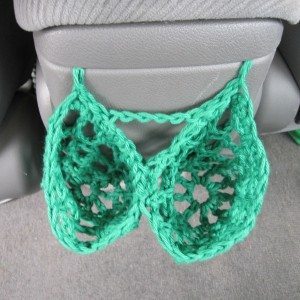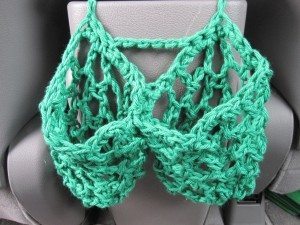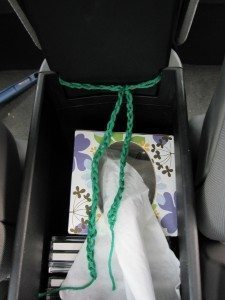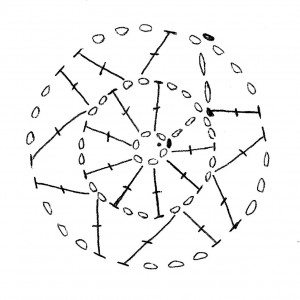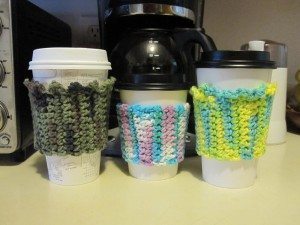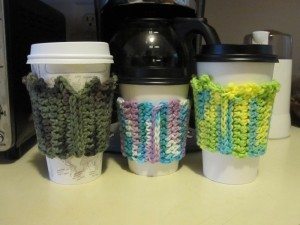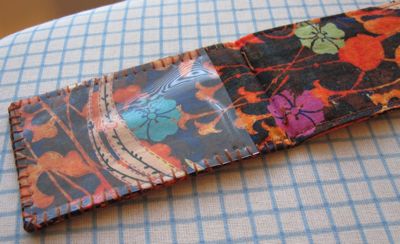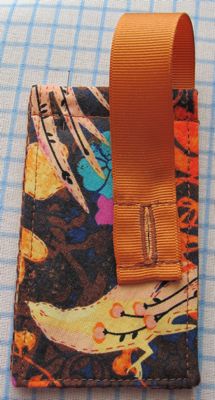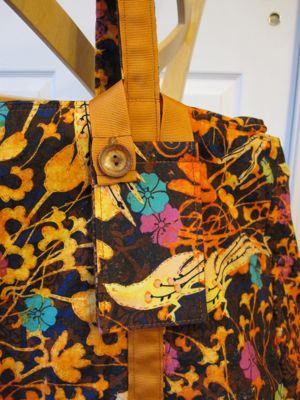My car is comfortable, reliable, and pretty efficient, but it lacks certain creature comforts. I’d been meaning to fix one of those lacks: there are no cup holders for the back seat. The front center “armrest” is the top of a cubby, hinged on its back end, and I pictured something like macrame plant hangers but on a cord that would tie around the hinge. Last week we drove the 90 minutes to my mother-in-law’s place and on the way I made these:
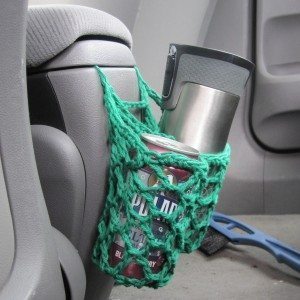
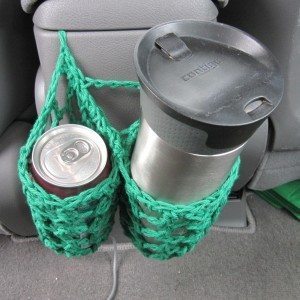
The pattern is easy to find in my notebook because my pen globbed up and then I got it on my hands and now, well, all the local pages are ink-stained.
Backseat Cupholders
I made these with a J/10 hook (6mm) and worsted weight cotton yarn.
Make two:
- Chain 6, sl st into ring.
- Ch 5 (counts as dc + ch-2), *dc into ring, ch 2* 8 times, sl st in 3rd turning ch to join (9 dc, 9 ch-2 spaces).
- Ch 3, dc in 2nd ch sp; ch 3, dc in same ch sp and next ch sp; ch 3, dc in same ch sp, sk 1 ch sp and dc in next; ch 3, dc in same ch sp, sk 1 ch sp and dc in next; ch 3, dc in same ch sp and next ch sp; ch 3, dc in same ch sp, dc in rnd-1 sl st; ch 3, dc in 3rd turning ch to join (12 dc, 6 ch-3 spaces). [This is much easier to follow in diagram form; see below.]
- Ch 3, *[dc, ch 3, dc] in next ch sp* 5 times, dc in next ch sp, ch 3, sl st in 3rd turning ch (12 dc, 6 ch-3 spaces).
- Repeat round 4.
- Repeat round 4.
- Ch 1, sc between each dc pair and 3 times in each ch-3 space (24 sc).
On first pocket, slip stitch or needle join in first sc of round to join and finish off yarn. On second pocket, use the yarn to join the cupholders together: place the first in front of the second so their outsides touch, and stitch into loops of round-6 stitches of both simultaneously. Sc 3, sl st, FO.
For the hanging cord, I did this:
Ch 30. Flatten cup holders so joined part is in the middle. Sl st into middle 4 stitches of back of right-hand cupholder (left if you crochet left handed), ch 5, sl st into middle 4 stitches of back of remaining cupholder. Ch 30, cut yarn and tie a knot. You’ll work outside to inside on the first pocket and inside to outside on the second. Ch-30 on each end was longer than needed, though, and even ch-20 should be adequate.
Behold my first crochet diagram for public consumption, rounds 1-3 of the pattern:
Dot = slip knot
Open oval = chain
Solid oval = slip stitch
Capped line with cross = double crochet
And a few more pictures.
